1. Navigation
1.1. Back to overview map
2. thining outside the box to map on entire brain
2.1. before
2.1.1. took 1000s of hours to reconstruct one neuron
2.2. using software
2.2.1. brought down to 50 hours per cell
2.3. however
2.3.1. if you've had a team of 100 people
2.3.2. working 24/7
2.3.3. using today's technology
2.3.4. still whould take 500.000 years to map one entire brain
2.4. turning to viral online games
2.4.1. i.e. AngryBirds
2.4.2. people spending 3 billion hours per week
3. Introducing: EyeWire
3.1. what is it?
3.1.1. a game to map the brain
3.1.2. availabe to anyone with an internet connection
3.2. currently
3.2.1. 90.000 people signed up
3.2.1.1. high school students to denitsst
3.2.1.2. scuplters, stock traders and retired people
3.2.2. from 130 countries
3.3. How does it work
3.3.1. sign in
3.3.2. allows you to see the neurons that have been mapped
3.3.3. start with one side of a neuron
3.3.4. end up on the other side to a cube
3.4. the future
3.4.1. EyeWire is the first of many games
3.4.2. allows to take a front row seat and making new discoveries to the brain
3.4.2.1. for anyone with an internet connection
4. think about when we live in discovery
4.1. unprecedended call for collbaboration
4.1.1. EU brain projects
4.1.2. US brain initiative
4.1.3. China's vast investment in biologival and computer sciences
4.2. we need to disrupt the way we approach science
4.2.1. we need an influx of
4.2.1.1. Statisticans
4.2.1.2. Mathematicians
4.2.1.3. Designers
4.2.1.4. Hackers
4.3. we're laying the foundation of the understanding of our human brain
5. About
5.1. ... this map
5.1.1. Use the + and - buttons to expand/ collapse topics
5.1.2. Hover over the notes icon to read attached notes
5.1.3. Look our for link icons like this one get more information
5.2. ...the author
5.2.1. Amy Robinson
5.2.1.1. Interview with Amy Robinson
5.2.1.2. http://amyrobinson.me/
5.2.1.3. https://eyewire.org/
5.3. ...this talk
5.3.1. Themes
5.3.1.1. Neuroscience
5.3.1.2. Gamification
5.3.1.3. Crowdsourcing
5.3.2. Related talks
5.3.3. Reactions
5.3.3.1. Flabbergasted by @amyleerobinson’s story about our brain and how an online game helps to map it! pic.twitter.com/JOIkqq2cjz #TEDxAms #EyeWire
5.3.3.2. I really think Amy Robinson is smartcute. #TEDxAms #EyeWire #project #innovative #neuroscience
5.3.3.3. http://eyewire.org Play a game to (help) map the brain #tedxams
5.3.3.4. Amy Robinson with a very cool project #mit #eyewire #gamification #neuroscience #TEDxAms excellent project!
5.3.4. Watch this talk on Youtube
6. So much innovation throughout the course of human history
6.1. not just
6.1.1. science
6.1.2. technology
6.2. also
6.2.1. culture
6.2.2. government
6.2.3. philospohy
6.3. all made possible because of the human brain
7. So, what is the human brain?
7.1. made of
7.1.1. 80 billion neurons
7.1.1.1. if every neuron in your brain was a person...
7.1.1.2. ... your brain could populate a city like amsterdam a 100.000 times
7.1.2. other cell types
7.2. complex network
7.2.1. junctions
7.2.1.1. called synapses
7.2.1.1.1. more synapses in 1 cubic cm of your brain then there are stars in the milky way
7.2.2. communications via
7.2.2.1. electrical impulses
7.2.2.2. chemical impulses
7.3. understanding the brain
7.3.1. need to map the network of cells in our brain to understad how the brain makes us who we are
7.3.2. integrate functional activity maps into those networks
8. reconstructing synaptic neural networks in the brain
8.1. While working at Sebastian Seung‘s Computational Neuroscience lab at MIT
8.1.1. more about Sebastian Seung
8.2. how
8.2.1. taking a volume of brain
8.2.2. image all the way thourgh it
8.3. allows to
8.3.1. see the individual neurons that have grown in that part of the brain
8.3.2. reconstruct the branches in full 3D
8.3.3. fit the branches together into entire cells
8.3.4. fit the cells together in networks
8.3.5. ...understand the celluar level circutry thats responsible for the communicaion inside the brain
